Horiyoshi the Third, aka Yoshihito Nakano, the world’s most famous Japanese tattoo master, 66, said that ten years ago, he had many more yakuza clients than he has now. “Nowadays I have 90 percent of non-yakuza clients and 10 percent of yakuza clients. Ten years ago it was much different. After the entry in force of the boutaihou, (anti organized crime laws), I have fewer gangsters as clients. The landscape has changed and so have the customers.”
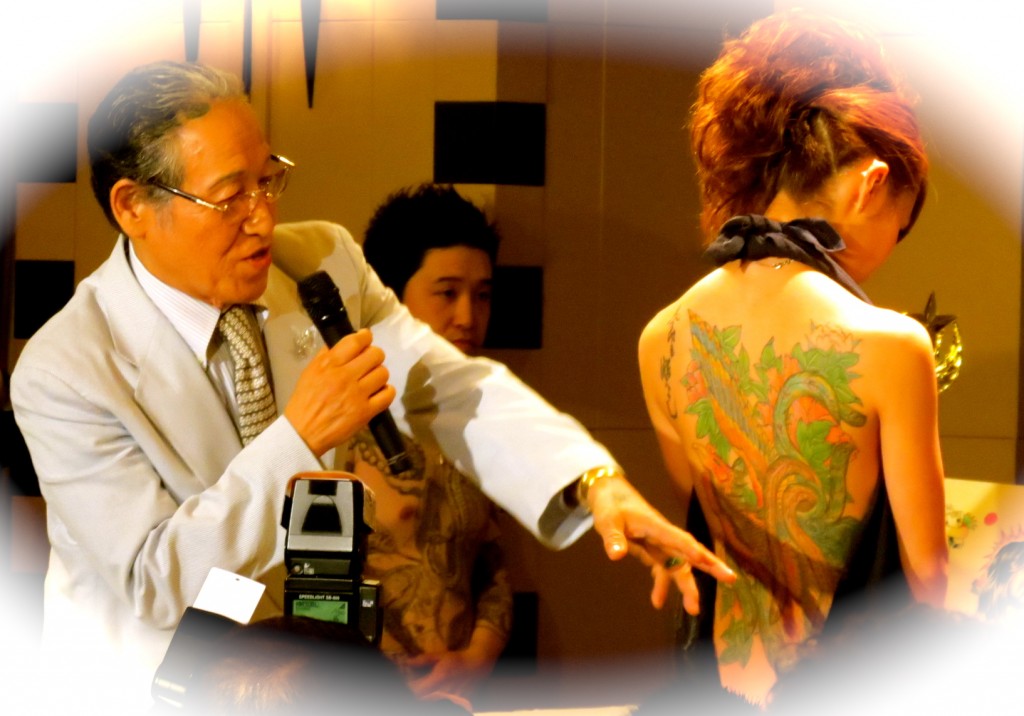
Horiyoshi III showing one of his work of art on a lady’s back, at a show organized at the FCCJ
Horiyoshi the Third’s interest in tattoo art began when he was 11 years old. He said he received a great shock when he saw a tattooed man at the public bath. Later, as a high school student he saw a book at the library, which was a collection of hundred poems and had many illustrations and engravings of tattooed men. He said that was the beginning of his passion for tattoos. It is much later that he began considering tattooing his own body. He said he used his body for many experiments before he found the most relevant technique. At high school, he wanted to do something that no one had done before. He cut his skin with a cutter and tried to insert ink inside his body. That was his first experience.
He got his first tattoo at age 22, by Horiyoshi the Second, on his entire back. At the time, while constantly thinking about inventing new techniques, he used to tattoo clients on his own. But because he wanted and needed to learn more about the art itself, he became the pupil of Horiyoshi the Second at age 25.
Horiyoshi the Third explained that anyone could wear a tattoo underneath their clothes: “People’s clothing are the ‘social symbols’ which allows other people to understand whether he/she is a Buddhist monk, a Christian priest, a salary man, or a medical doctor. Therefore the clothes are the symbols constructed by the community. But at the public bath, once naked, no one knows whether you are a monk, a priest, a lawyer or a musician. The tattoo is the individual’s own symbol. It is a different world. People who wear tattoos feel like they live in two different worlds. Usually, ordinary people live in the same society, whether they take off their clothes or whether they wear them.” He said during a tattoo session in his Yokohama studio.
“People’s clothing are the ‘social symbols’ which allows other people to understand whether he/she is a Buddhist monk, a Christian priest, a salary man, or a medical doctor. Therefore the clothes are the symbols constructed by the community. But at the public bath, once naked, no one knows whether you are a monk, a priest, a lawyer or a musician. The tattoo is the individual’s own symbol. It is a different world. People who wear tattoos feel like they live in two different worlds.
At a special event organized at the Foreign Correspondents Club of Japan (FCCJ) on May 22nd, Horiyoshi III explained that tattoos remain popular among Japan’s organized crime members, but he insisted on the fact that nowadays, a person who choose to have a work of art indelibly marked on their skin are not necessarily a gangster.
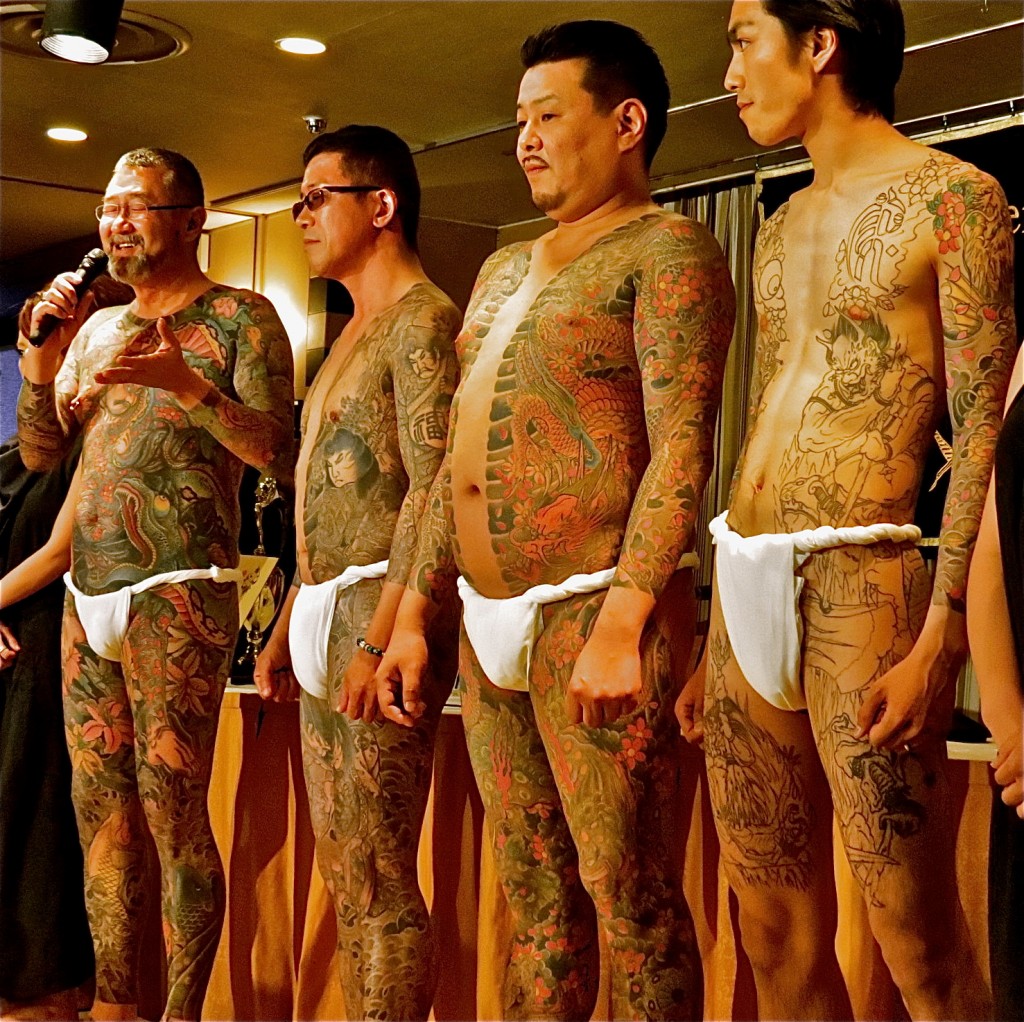
Men tattooed by Horiyoshi III, live show at the FCCJ, in May 2012
Interview with Horiyoshi III in Yokohama, in summer 2012
How does it feel to have your skin permanently colored?
People who wear a tattoo have the chance to review themselves all the time, because they can observe themselves inside and outside, in the sense that they constantly position themselves from the point of view of ‘the other’, from the point of view of a third person.
Urban legend says that European aristocrats have been secretly tattooed by Japanese tattoo artists in times when tattoos were forbidden in Japan, could you give us a comment?
During the Meiji period, creating tattoos and wearing them was forbidden, however the Japaneseirezumi (入れ墨)were hugely popular in foreign countries.
Frederique IX of Denmark (King of Denmark from 1947 to 1972) probably did not get his tattoo in Japan, in a time when it was banned by the government. Tattooing has been outlawed by three government decrees. When we see the old photos of him, we can indeed see he has a Japanese dragon, but who knows if there is a public record of his travel to Japan? There is another Horiyoshi in Azabu (Tokyo), who has no ties with us, the Horiyoshi from Yokohama. Many people get mixed up. I am a descendant of this tradition, and despite those bans, our culture has survived.
There are many tales about the European aristocrats. Nikolai II from Russia is also known for having a tattoo made by a Japanese tattoo master. It is said that he had it done in Yokohama, but it is more likely that it happened in Nagasaki. Documents have come out recently about this incident. He really insisted that he wanted to have a Japanese tattoo although the Japanese government was banning tattoos for its own people. But because the request came from a nobleman, the Japanese government allowed this to happen.
There are many stories like that on the record. We do not know what parts of these stories are true and what parts are not. However, one thing is sure, there was never a Horiyoshi master from Yokohama involved in these kind of stories.
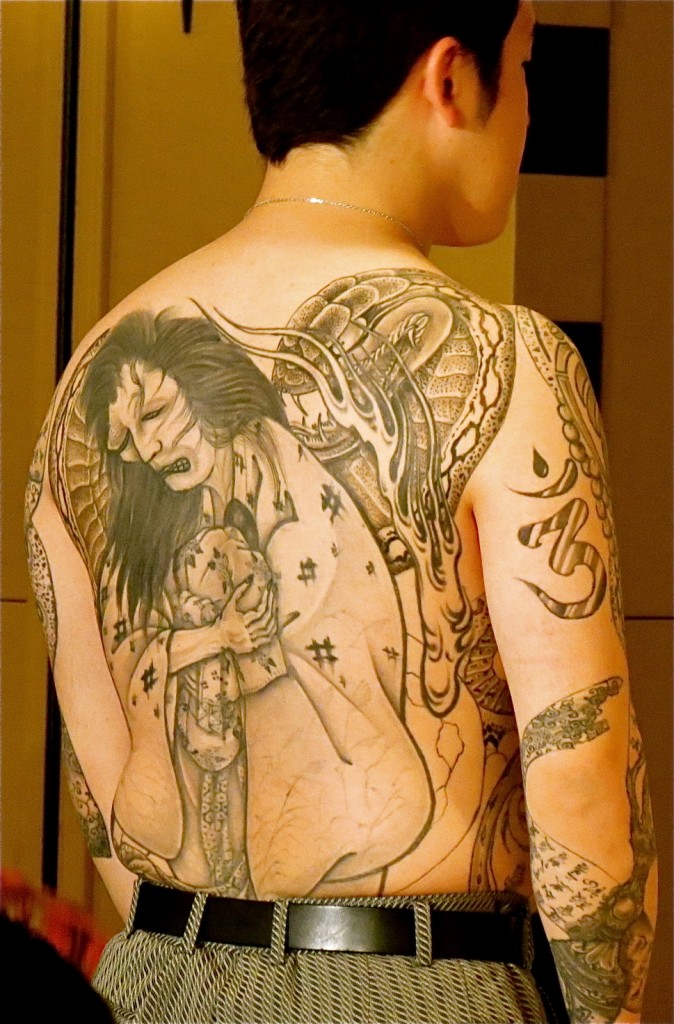
Tattoo featuring a female ghost on the back of the son of Horiyoshi III, who will become Horiyoshi IV someday
What does religion say about tattoos?
In the Confucian society, you are not suppose to hurt your own body, otherwise it was the beginning of the unhappy life.
Could you tell what you think about the mayor of Osaka and his latest crackdown on tattoos?
Modern Japanese people are being mind controlled, in the sense that they ‘fear’ people who wear Japanese irezumi. Because the mass media have ranked irezumi out of the arts, the ordinary people started to recognize it as a ‘bad thing.’ For example, when a child sees a tattooed person at the swimming pool or at the public bath, his or her parents would say ‘don’t go there, don’t watch it,’ that’s why, unconsciously, people start to hate tattoos. We can say this is a sort of propaganda.
We say ‘yakuza are bad’. It is true that they do bad things, but it isn’t only the yakuza who do the bad things, and people without tattoos can also be criminals. For example, during the Great Hanshin Earthquake in Kobe in 1995, those who took emergency action before the administration were the yakuza. They distributed drinking water, baby diapers and many other survival materials. The media never report on the good things they do. This can be seen as an accusation. The Japanese government takes advantage of their help only when it is advantageous, but when it doesn’t suit them, they truncate, this is the power of the state. But when you have a big crime, you can sure that all the media will be after it. So, according to me, the question is which news should be covered more intensely. I do believe that the media associate the tattooed people with the ‘bad ones.’ So, in the news, you will read ‘a tattooed person did such or such crime.’ I don’t know why, but the people who hate tattoos have a reason to discriminate people who wear them.
I think it is bad from the media to report only one side of the story of these people. The obligation of the media is not to force people to believe one thing, but to give the chance to the readers to understand both sides of an issue and decide for themselves.
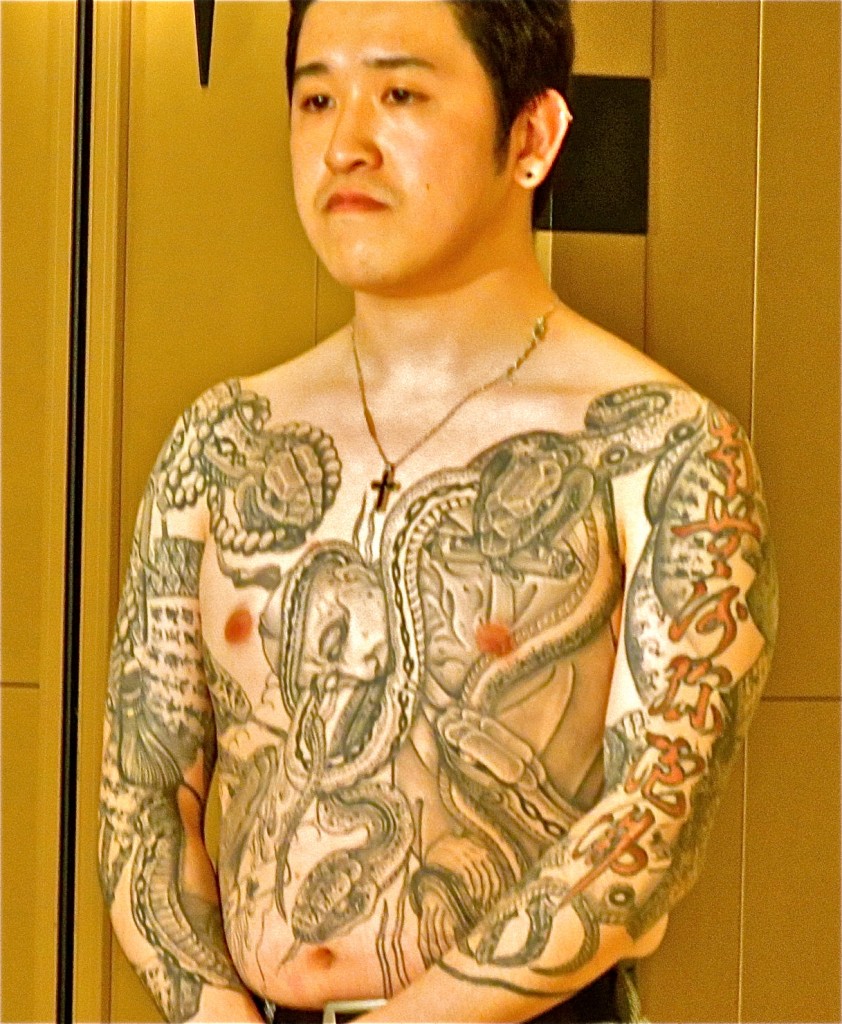
Front side of the future Horiyoshi, unusual and morbid features
Why do we refer Japanese tattoos to organized crime (yakuza)?
I think that the Western people also have a prefabricated idea that the Japanese traditional irezumi are designed for the yakuza. Someone once told me ‘I want a yakuza-style’ tattoo. It is a common recognition of it. But it is not the yakuza’s fault if their tattoos are designated in such way.
How long did it take you to tattoo your entire body?
In total, it took me 12 to 13 years to get the entire tattoos on my body, including the time that I didn’t get tattooed. It is one of the good things about Japanese traditional tattoos, is that it requires time, thought and energy to realize them. In the west, people make them too quickly, without giving it deep thought, and they regret their actions. For them, it is normal to have one tattoo started and finished quickly on the same day.
It is difficult to say whether the wabori Japanese traditional tattoo hurts more or less than the electric needle tattoo. Pain is like a tickle, it is not a feeling that you can measure. You can measure the weight of a person, for example, but you cannot measure pain. Some people say they are afraid of the sound of the electric needle.
Do you tattoo yakuza?
My clients are 90% “ordinary people”, among them salary men, musicians, bar hosts, of course I do have yakuza clients as well. However I have fewer yakuza clients than I used to have in the past. Some kumi or organized crime groups nowadays order their members to erase their tattoos with lasers, if they can afford it.
How different is it to tattoo on female body?
I do not really enjoy tattooing women, not that I am misogynistic. I hate to ask a woman to undress herself, but I cannot tattoo them if they are not naked. Also, the problem with women is that they tend to bring tattoo masters to court because of a missed movement. It is also very annoying to constantly try to be vigilant not to have the next client sitting in the waiting room to try and see the naked body of the female client. It is simply too time consuming and I don’t have the energy for that anymore.
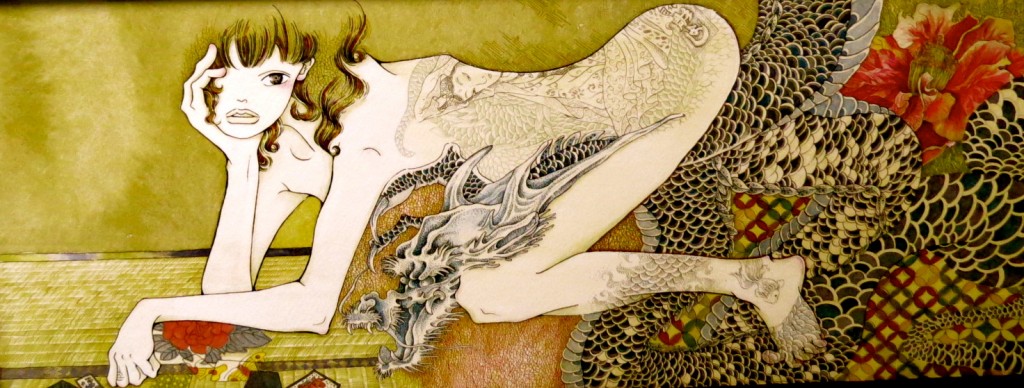
A painting found at the Tattoo Museum in Yokohama
I think that the Western people also have a prefabricated idea that the Japanese traditional irezumi are designed for the yakuza. Someone once told me ‘I want a yakuza-style’ tattoo. It is a common recognition of it. But it is not the yakuza’s fault if their tattoos are designated in such way.
How long does it take to make a whole body tattoo?
To estimate how long it takes for a whole body tattoo, it depends on the weight and the height of the person, however in average, it can take up to more than 200 hours.
Is traditional wabori (和彫り) more painful than the modern needle?
It is difficult to say whether the wabori, the Japanese traditional tattoo hurts more or less than the electric needle tattoo. Pain is like tickle, it is not a feeling that you can measure. You can measure the weight of a person, for example, but you cannot measure pain. Some people say they are afraid of the sound of the electric needle.
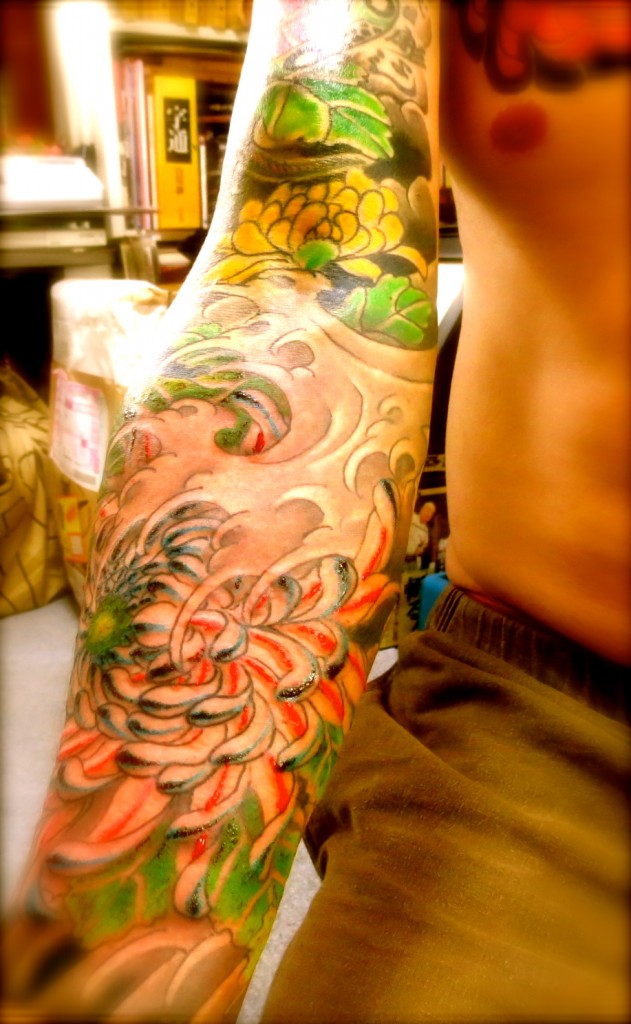
A fresh tattoo, the red ink of chrysanthemum petals looks like blood
You are a very experimental tattoo artist, what are some of the innovations you made?
I was using my own technique for twenty years before I presented it to the general public. However, once it was launched, every Japanese tattoo master in the world started to use it, because it was much more hygienic than the traditional bamboo stick tool.
Very traditional tattoo masters use a tool which I have refined. It is called the tebori you no nomi, which means the “hand digging tool.” In Japanese the tattoo is like the action of “digging in the skin.”
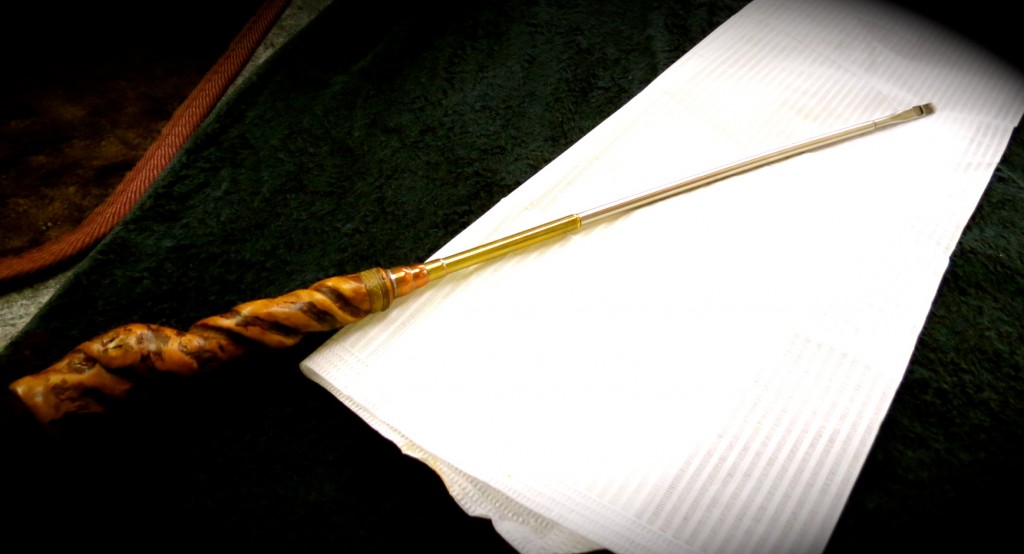
above “tebori you no nomi” modified by Horiyoshi the 3rd
Do you think your art will fade?
I am a descendant of this tradition, and despite the government bans our culture has survived. The tattoo will never die, it will evolve. It is natural that compared to the Edo period, the tool, the designs and technologies are all in constant evolution. Therefore my art will evolve, rather than disappear, this is my belief.
For example, in the past, I used to throw shochu (potato liquor) on the scars, nowadays, thanks to progress in the art, we use certified disinfection drugs. This is also an evolution of the techniques.
Ten years ago, I had 10 percent of foreign clients and this year, I have maybe 40 percent of clients who are non-Japanese. The number of Japanese tattoo fans is continuously increasing over the years. Tattoos may fade over time but the art of tattooing itself will never fade way.
Original article posted on www.japansubculture.com
